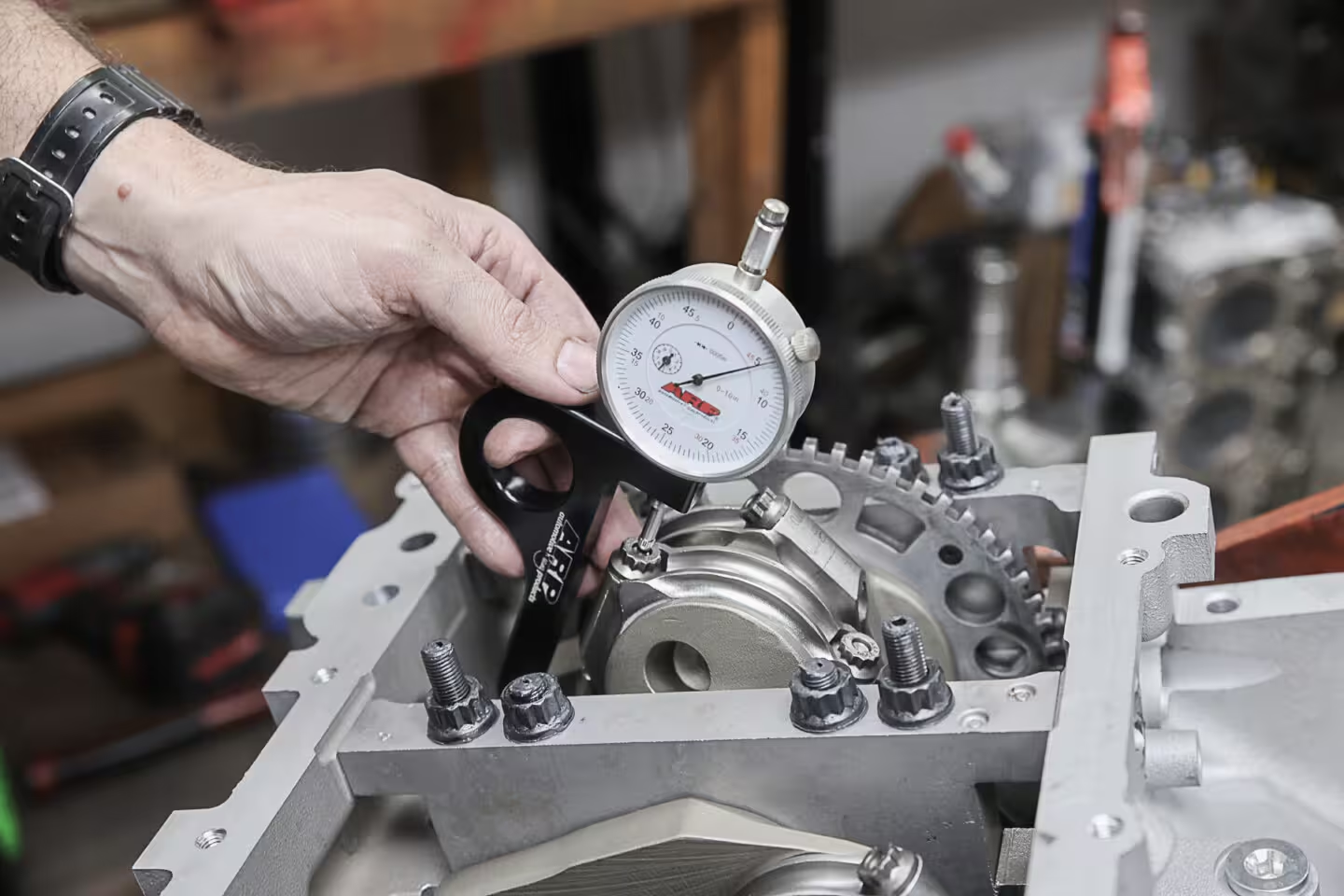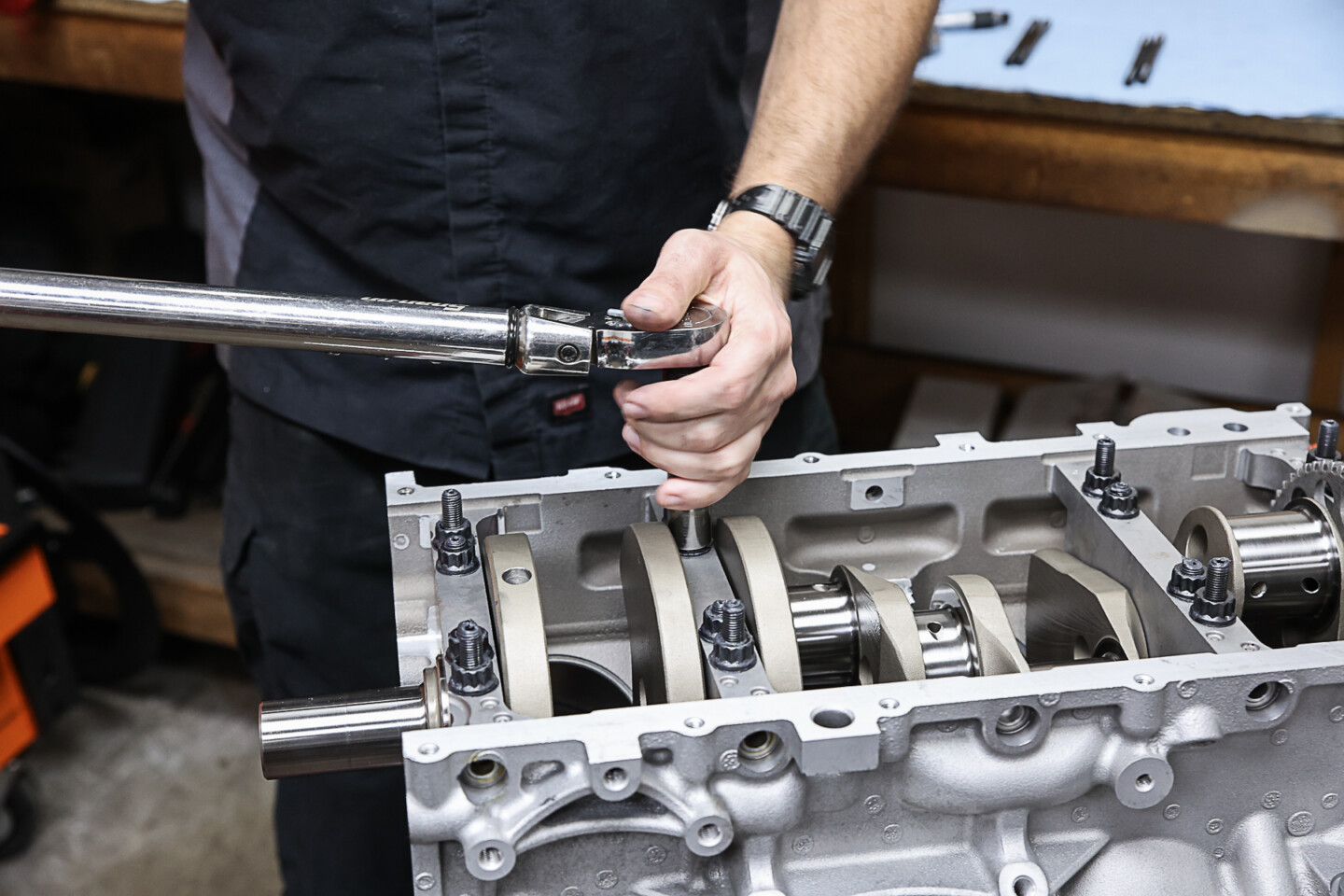The art of assembling an engine is based on precision and attention to detail. Everything must be measured to ensure it’s within the required specs, including how much stretch fasteners are going through. ARP not only recommends you use a stretch gauge, but it also has a rod bolt stretch monitoring chart you can use to track their length during assembly and disassembly.
In a previous article, we covered important tips for installing ARP fasteners and touched on why you want to use a stretch gauge. The stretch gauge will make sure you’re getting the most accurate preload reading for the fastener. This is going to help make sure that the fastener is achieving the correct amount of clamping force.
ARP’s website explains what exactly the stretch gauge does.
“When using a stretch gauge, it’s best to measure the fastener prior to starting and monitor overall length during installation. When the bolt has stretched a specified amount, the correct preload or clamping force has been applied.”
So, you’ve got the number from the stretch gauge and you’ve recorded it on the stretch monitoring chart, now what? Well, if you see the fastener has an increase of .0005” or more in length, it’s time to replace that fastener because it’s experiencing some type of deformation. Now you see why it’s important to keep this chart updated, because fasteners that are experiencing deformation could have an increased chance of failure. ARP has made a downloadable version of the rod bolt stretch monitoring chart available right here.
There’s a lot of really good information on ARP’s website about the proper way to install fasteners. You can check it out here.
Click Here to Read the Full Original Article at DragzineDragzine…


